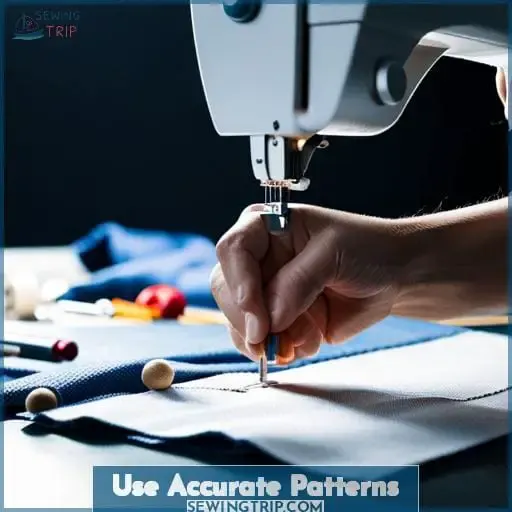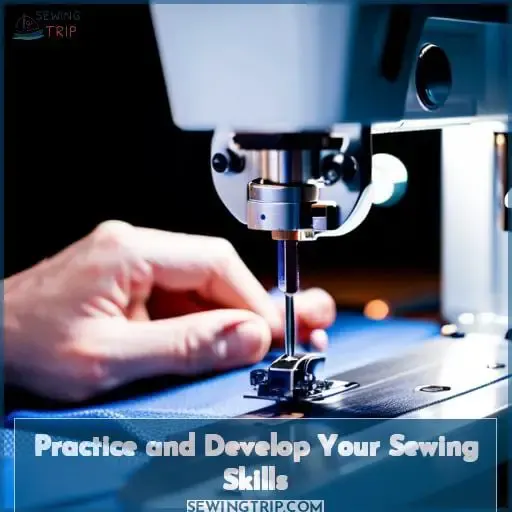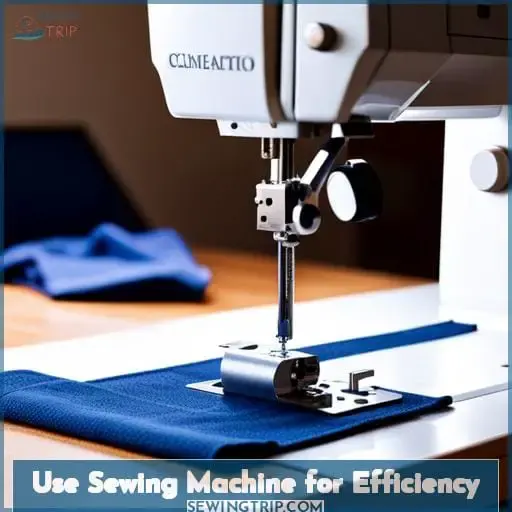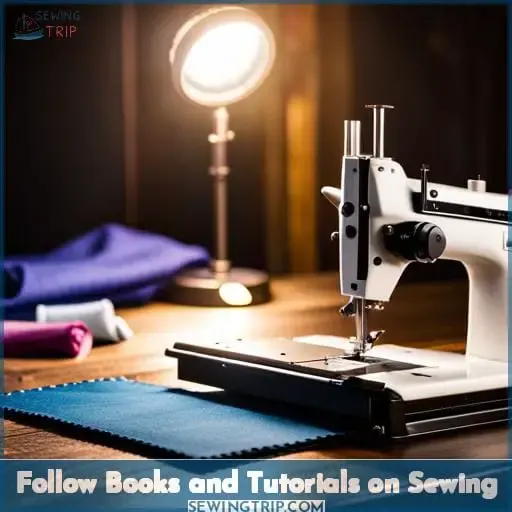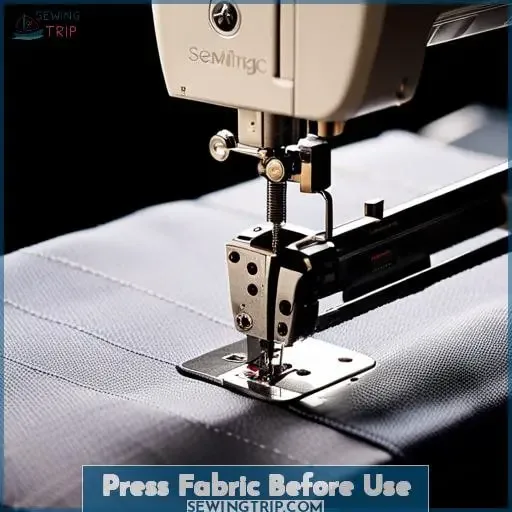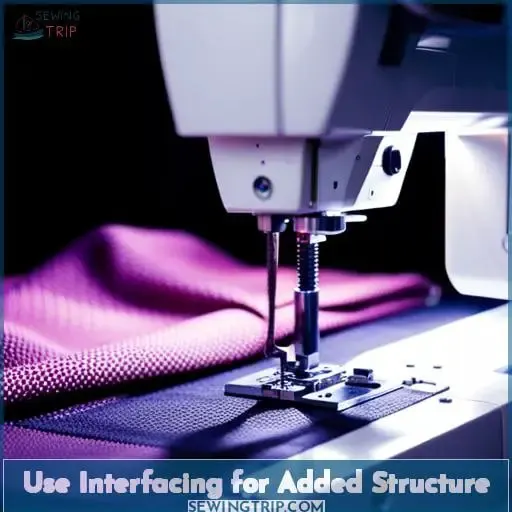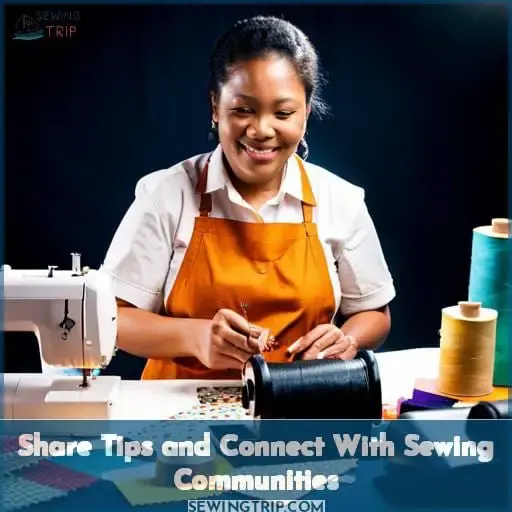This site is supported by our readers. We may earn a commission, at no cost to you, if you purchase through links.
Do you want to become a master of sewing? If so, then you’re in the right place! Improving your sewing skills doesn’t have to be difficult. With some practice and focus on details, anyone can become an expert seamstress.
In this article, we’ll cover tips for improving accuracy with patterns, quality of fabrics and tools used, efficient use of machines, as well as following books and tutorials on how to sew correctly. We’ll also discuss pressing fabric before use, trimming seams for reduced bulk, along with using interfacing for added structure.
Read on to learn more about how simple it is to take your sewing projects up a notch!
Table Of Contents
- Key Takeaways
- Use Accurate Patterns
- Choose High Quality Fabrics and Tools
- Practice and Develop Your Sewing Skills
- Use Sewing Machine for Efficiency
- Follow Books and Tutorials on Sewing
- Press Fabric Before Use
- Trim Seam Allowances for Reduced Bulk
- Use Interfacing for Added Structure
- Share Tips and Connect With Sewing Communities
- Frequently Asked Questions (FAQs)
- Conclusion
Key Takeaways
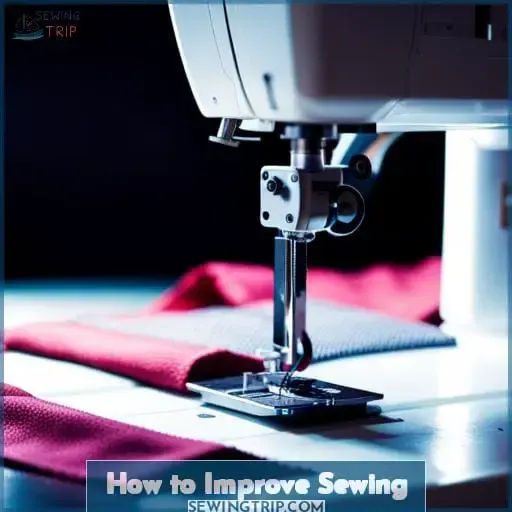
- Accuracy with patterns, quality of fabrics and tools, and efficient use of machines are important factors to consider in improving sewing skills.
- Essential steps for professional-looking projects include pressing fabric before use, trimming seams for reduced bulk, and using interfacing for added structure.
- Choosing high-quality fabrics and tools can save time and ensure a professional finish.
- Practicing and developing sewing skills, such as tailoring techniques and needlework basics, can improve workmanship abilities.
Use Accurate Patterns
You need to pay attention to the details when working on your sewing projects in order to ensure success. Start by choosing a pattern size that fits both your body part and garment. Then, carefully mark important lines and center front.
Experiment with techniques such as shaping curves or monitoring grain for better results. Hand stitching details like piping can add unique touches, while designing support features like interfacing should be done at discretion instead of following instructions blindly.
Make sure you understand fabric grain before cutting, adjust hem width based on shape, and trim seam allowances close without fear of fraying! When attaching shoulder pads, make sure they are mobile enough for movement.
Substitute serged or bound neck edge if necessary and consider underlining garments for desired effect.
Choose High Quality Fabrics and Tools
Choose fabrics that evoke the desired look and feel for your project, and invest in quality tools to ensure a professional finish. A good choice is high-speed nylon zippers, which are strong yet lightweight. Investing in a rotary cutter can also save time when cutting fabric layers precisely with no fraying edges.
It’s important to use color codes when marking patterns and garment pieces so you don’t get confused or lose track of what goes where during assembly. Adjust hem widths based on fabric weight for drapeable garments like skirts; heavier hems require wider allowances than lightweight fabrics do.
Consider underlining garments if needed – this technique helps add support while keeping the original hand of the fabric intact.
Cross seams instead of pivoting to avoid distorting grain lines. Then, stitch mobility into shoulder pads for added flexibility without distortion from movement strain. Use multiple interfacing layers strategically placed around curved edges or areas needing more structure such as lapels and jacket fronts; lighter weights should be used near sleeve hems.
Finally, trim seam allowances close enough that they won’t fray but leave some room for adjustment later on if necessary.
Practice and Develop Your Sewing Skills
Practice and hone your sewing skills by trying new gadgets, experimenting with different types of interfacing, and utilizing traditional pressing tools.
Learn the basics of tailoring techniques like clipping seam allowances to eliminate bulk or using longer zippers for a better fit. Become familiar with needlework basics such as color-coding markings to save time or understanding how fabric grain affects project shape when cutting patterns.
Choose quality fabrics that meet the weight requirements of each garment you are constructing – this is essential for proper fit and structure! Ensure machine maintenance is up-to-date: replace nylon zippers if needed; adjust tension on thread spool; check feed dogs alignment; sharpen presser foot blade regularly.
Incorporate point pressers into curved seams instead of pivoting them around corners which can distort fabric grain lines – use hands & eyes to confirm support areas needing body in garments before stitching ambitious seams in sections!
Utilize heavier interfacings where more structure is required, but don’t forget lighter ones too: lapels need heavier layers while jacket fronts require something mediumweight along hemlines & collars will benefit from respect turn cloth when pressing them down carefully prior attaching buttons or other details.
Get creative & have fun exploring custom sewing projects – there’s no limit to what one can create!
Use Sewing Machine for Efficiency
By utilizing a sewing machine, you can save time and ensure accuracy in your projects with ease. For example, using an adjustable stitch length allows for quick adjustments to accommodate different fabrics, helping make hemming quicker and more uniform.
When selecting fabric for your project, consider the type of thread that will be used, as well as the right side of the fabric, which should always face up when sewing. When attaching sleeves or other curved edges, use a sleeve cap to get the closest possible fit.
Additionally, it’s important to maintain your machine by oiling it regularly according to manufacturer instructions and changing presser feet depending on what you are working on at any given time. Always choose patterns based on chest measurement rather than size alone, then alter them if necessary.
With practice comes mastery, so don’t forget that details like piping or decorative stitches add unique touches, making each piece truly one-of-a-kind!
Follow Books and Tutorials on Sewing
Gain confidence in your sewing skills by exploring countless books and tutorials on the craft! With an understanding of stitches, thread selection, reading patterns, and fabric selection, you can create pieces to be proud of.
- Creating neck facings with serged or bound edges instead of back-neck facings.
- Understanding turn of cloth when pressing collars and attaching buttons.
- Thread tracing lines for easier accuracy while cutting out pattern pieces.
- Grading seam allowances to eliminate internal bulkiness from garments without sacrificing strength or durability at stress points like upper hip areas where support is needed most.
By practicing these methods, you’ll start feeling more confident in your workmanship abilities, whether it be a simple repair job or constructing an entire garment from scratch! Gaining knowledge through practice will help elevate any project with professional results that are not only beautiful but also durable enough for everyday use!
Press Fabric Before Use
Perfect your project by pressing the fabric with the correct heat setting and tools! Understanding fabric selection is key to improving accuracy. Choosing the right weight of interfacing for each garment can make all the difference in the performance of your iron.
To help secure heavier fabrics such as wool or velvet, practice techniques like small swing tacks. For garments that require more movement, use longer zippers to ensure a better fit. Traditional pressing tools like clappers and point pressers can supplement attention given when using an iron alone, ensuring that unique details are not lost during the construction process.
With the talent of my students, I have seen much success through machine adjustments and proper use of interfacing, even on challenging projects that require great support from within a garment body itself.
Take pride in every step you take towards improving your sewing skills! Don’t forget to press the fabric before use.
Trim Seam Allowances for Reduced Bulk
Trimming your seam allowances as close as 1/8 inch is a simple way to reduce bulk and give your project the perfect shape – it’s like carving out an ice sculpture with precision!
To get the best results, organize interfacing before use. Instead of metal templates for curved edges, consider using lining to achieve the desired shape.
When cross seams are required, avoid pivoting which causes distortion of fabric grain; instead stitch in sections for proper alignment. Make sure that shoulder blades fit armholes by adjusting lower-body pattern pieces accordingly and clip around corners or curves so they don’t fray easily when the finished project is worn or washed repeatedly.
Interfacing should be used at discretion rather than blindly following instructions on the pattern envelope.
Use Interfacing for Added Structure
Add structure to your garments with interfacing – you’ll be amazed at the difference! Interfacing is a great way to reinforce fabric and add strength, especially when constructing collars or working with piping.
When binding seams, choose interfacing that matches the weight of your fabric for best results. Experimenting with different techniques can give you amazing results as well. Try using small dots instead of standard hem measurement, use point fusible tapes at the point of an in-set seam allowance, and consider hand stitching instead of machine sewing on delicate fabrics.
For a professional look, always cut patterns carefully, paying attention to grain lines and dimensions while using rulers and rotary cutters on cutting mats for clean straight lines. Be sure to press fabric correctly before beginning construction as it will make all pieces lie flat together properly when sewn together later in the construction process.
With these tips, you’ll have no trouble creating beautiful garments that are structurally sound!
Share Tips and Connect With Sewing Communities
Discover the convenience of connecting with vibrant sewing communities for helpful tips and ideas! Join groups where you can share your projects, ask questions, and interact with other sewers.
To ensure success, buy quality materials when starting any project. It’s important to practice regularly to build skills. Read tutorials or watch online videos as needed. Try new gadgets and accessory feet that may make tasks easier while learning how best they work for you.
Experimenting is key. Test spare fabric pieces before tackling pattern pieces or larger items. Use scraps of different fabrics when practicing stitches so that you understand the direction of warp thread better.
Get creative with interfacing if desired results are not achieved using patterns alone.
Finally, challenge yourself, but also remember that it takes time. Be patient and enjoy every step along the way!
Frequently Asked Questions (FAQs)
How do I ensure accurate cutting of fabric?
To ensure accurate cutting of fabric, you will need a ruler, a rotary cutter, and a cutting mat. When measuring, make sure to align the fabric grain correctly, as this affects the direction of the warp thread.
What type of interfacing should I use for a particular fabric?
Choose interfacing based on the weight of the fabric and the desired effect. Consider underlining to alter the hand, drape, or weight. Use heavier interfacing in areas that require more structure and lighter-weight for garment fronts.
What is the best way to press fabric?
Press fabric using the correct heat setting and tools, such as a pressing ham or presser bar for curved edges. Use spray starch with caution and test spare fabric before working on actual project pieces to avoid damage.
When ironing collars and attaching buttons, respect the turn of cloth. Differentiate between topstitching and edgestitching based on the scale of the garment or fabric.
How can I save time while sewing?
To save time while sewing, consider using longer zippers, clipping and grading seam allowances, substituting serged or bound neck edges for back-neck facings, crossing seams instead of pivoting, shaping sleeve caps to fit armholes before attaching, color-coding markings, and trimming seam allowances as close as 1/8 inch without fear of fraying.
What are some tips for avoiding fraying seams?
To avoid fraying seams, clip to the stitch instead of stitching to the clip, and trim seam allowances as close as 1/8 inch. Use interfacing where needed for support, and color-code markings can save time.
Respect the turn of cloth when pressing collars and attaching buttons for better results.
Conclusion
You’re now equipped with the tips and tricks to improve your sewing skills. With practice and dedication, you can become a master seamstress in no time.
You’ll be amazed at what you can accomplish when you put your heart into it. With the right tools and fabric, you can make anything from a simple skirt to a designer gown. Just remember to use accurate patterns, choose high-quality fabrics and tools, follow books and tutorials, and practice, practice, practice.
With a little patience and effort, you’ll be on your way to becoming a sewing expert.

